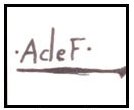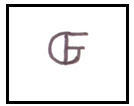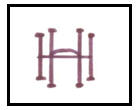
About UsThe Numismatic Bibliomania Society is a non-profit organization promoting numismatic literature. For more information please see our web site at coinbooks.org SubscriptionsThose wishing to become new E-Sylum subscribers (or wishing to Unsubscribe) can go to the following web page link MembershipThere is a membership application available on the web site Membership Application To join, print the application and return it with your check to the address printed on the application. Membership is only $15 to addresses in the U.S., $20 for First Class mail, and $25 elsewhere. For those without web access, write to: David M. Sundman, Secretary/TreasurerNumismatic Bibliomania
Society AsylumFor Asylum mailing address changes and other membership questions, contact David at this email address: dsundman@LittletonCoin.com SubmissionsTo submit items for publication in The E-Sylum, just Reply to this message, or write to the Editor at this address: whomren@coinlibrary.com
BUY THE BOOK BEFORE THE COINYou won't regret it! |
- WAYNE'S WORDS: THE E-SYLUM AUGUST 8, 2010
- AMERICAN NUMISMATIC ASSOCIATION CONVENTION NBS ACTIVITIES
- DAVID SKLOW MAIL BID SALE 11 CLOSES OCTOBER 9, 2010
- NEW BOOK: MONOGRAMS OF AMERICAN COIN AND MEDAL ARTISTS
- UPCOMING BOOK: MERCHANTS MAKING MONEY, 2011 EDITION
- WHITMAN PROMOTION HIGHLIGHTS RED BOOK CONTRIBUTORS
- MORE ON AUDUBON'S FIRST ENGRAVED ILLUSTRATION
- AUTHOR LEONARD TO DISCUSS CURIOUS CURRENCY ON RADIO SHOW
- ON PICTURES OF THE FIRST UNITED STATES MINT
- MORE ON HOBBIES MAGAZINE
- MORE BOOKS WITH AN ENCASED COIN OR MEDAL
- READER COMMENTS ON 'THE MEDAL MAKER' VIDEO
- AFFORDABLE LEATHER BOOKBINDING SERVICE RECOMMENDATIONS
- QUERY: COIN CHEMISTRY REFERENCE SOUGHT
- DAVID ALEXANDER RECEIVES THE BURNETT ANDERSON MEMORIAL AWARD
- UPDATE ON THE HUNLEY, THE LUCKY COIN SUBMARINE
- MORE ON WHY CASH COINS HAVE SQUARE HOLES
- NOTES FROM E-SYLUM READERS, AUGUST 8, 2010
- THE NUMISMATIC BIBLIOMANIA SOCIETY FACEBOOK FAN PAGE
- IS IT REAL? A 1913 DENVER MINT SHIPPING CRATE
- THE PRESIDENTIAL CITIZEN'S MEDAL
- MECHANICAL BANKS BREAK RECORDS AT MARYLAND AUCTION
- LINCOLN CENTS DECORATE BAR IN SPRINGFIELD, IL
- FEATURED WEB SITE: TEYLER'S MUSEUM
WAYNE'S WORDS: THE E-SYLUM AUGUST 8, 2010

Among our new subscribers this week are Dennis DeYoung, Mark Watson, D. Stepan, Jeffrey S. Zarit, and Tony Swicer. Welcome aboard! We now have 1,367 subscribers.
First, thanks are due to John Salyer for helping out with several of the images in this issue. This week we open with information about NBS activities at the ANA convention in Boston, word from David Sklow about his October literature sale, and an announcement of an unusual and important numismatic book by Dick Johnson.
To learn about medal artist monograms, more surviving impressions of Audubon's "running grouse" on currency, the Citizens Medal and a bar covered in Lincoln Cents, read on. Have a great week, everyone!
Wayne Homren
Numismatic Bibliomania Society
AMERICAN NUMISMATIC ASSOCIATION CONVENTION NBS ACTIVITIES
Regarding this week's American Numismatic Association convention, NBS Past President John W. Adams writes:
Our Numismatic Bibliomania Society Symposium takes place on Thursday the 12th at 11:30 am. I will be speaking on "Medallic Portraits of Admiral Vernon". No less than 14 previous authors have written in depth on the subject - these include such luminaries as Edward Hawkins, C. Wyllys Betts and Jose Medina. I will try to explain the irresistible allure of these medals and then answer an historical mystery: why was the loser of the battle of Cartagena showered with medals and the winner cashiered by his King?
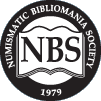 August is just around the corner! I hope all NBS members are marking the week of August 9 on their calendars. In addition to our NBS meetings there are meetings sponsored by just about every major numismatic group. Additionally, the week will be full of lectures and seminars for every numismatic taste. If early American history is of interest to you, Boston is the cradle of the revolution and offers an abundance of “living” U.S. history references along the Freedom Trail: so much to do, so little time!
August is just around the corner! I hope all NBS members are marking the week of August 9 on their calendars. In addition to our NBS meetings there are meetings sponsored by just about every major numismatic group. Additionally, the week will be full of lectures and seminars for every numismatic taste. If early American history is of interest to you, Boston is the cradle of the revolution and offers an abundance of “living” U.S. history references along the Freedom Trail: so much to do, so little time!
Our NBS schedule at the Boston ANA in August is set. The NBS Symposium will be held on Thursday, August 12 at 11:30 am to 1:00 pm). The symposium will feature John Adams with a presentation and discussion of his new book, Medallic Portraits of Admiral Vernon. In his review, Joel Orosz says “Medallic Portraits of Admiral Vernon does such a superb job of defining the previously indefinable, the only numismatic book in English to which it can appropriately be compared is Sylvester Sage Crosby's Early Coins of America.”
This “don't miss” presentation will be held in the Fairfax-A Room in the Sheraton Boston Hotel. Please note that the Sheraton Boston Hotel connects directly to the Convention Center and the Bourse Floor. The NBS Board meeting will immediately follow the symposium at 1:00 pm to 2:00 pm in the same room.
The regular NBS meeting will be held on Friday, August 13 at 11:30 am to 1:00 pm at the Massachusetts Historical Society. This is just a few blocks from the convention center. John Adams was instrumental in making the arrangements for us to have our regular meeting in one of the special library rooms in the MHS.
The regular meeting will include notes from the board meeting (previous day), current NBS status, literature dealer announcements, input from members, fund raiser auction (with Brad “open up your checkbook” Karoleff), future NBS projects, and a few surprises.
Our featured speaker will be Frank Campbell. Frank will highlight some of his favorite memories on books and personalities during his outstanding career as librarian of the ANS: another “don't miss” presentation. We will also be given an opportunity to look over some of the significant collections at the MHS, so plan for a little extra time. This should be a great meeting.
Donations. If you have any numismatic literature material that would be suitable for the NBS auction, please bring it to the regular meeting. The auction proceeds provide funds that allow us to continue our grants and awards. As you know, Brad will maximize the bidding on all the lots to maximize our treasury. Again this year we are providing a $1000 ANA summer seminar scholarship to some deserving Young Numismatist.
—Dan Hamelberg
For more information about NBS, see our web site: www.coinbooks.org
John and Nancy Wilson add:
We received reliable information regarding taxi and shuttle service at the Boston Airport. Cabs to the convention center and nearby hotels run around $45 or $50. One different mode of transportation that would be lots cheaper would be contacting www.ultimateshuttle.com or calling them at 888-437-4379 and reserving space on the van. A reservation is required and it is $14 each way per person. The number and email are accurate. Hope this helps.
DAVID SKLOW MAIL BID SALE 11 CLOSES OCTOBER 9, 2010
MAIL BID SALE NO. 11 CLOSES OCTOBER 9, 2010
PART THREE OF “THE MASTER OF WOLFEBORO”
Q. DAVID BOWERS RESEARCH LIBRARY
Catalog now available on-line at our web site
From the research & source library of Q. David Bowers comes over two-hundred and fifty lots concerning the American Civil War, Maritime history and ships, references on every type of collectible and the memorabilia of Abe Kosoff.
The sale also features nearly two-hundred, nineteenth century auction catalogs spanning 1855-1875 from the library of numismatic publisher and literature dealer Myron Xenos and special selections from the library of Bill Weber.
Bidders may enter bids by mail, telephone, email or fax. The sale closes at 8pm mountain time, October 9, 2010, however, any bids left on our answering machine or sent by email or fax on or before midnight will be accepted.
Catalogs are available upon request at no charge or can be found on our website.
 DAVID SKLOW – FINE NUMISMATIC BOOKS
DAVID SKLOW – FINE NUMISMATIC BOOKS
P.O. BOX 6321
COLORADO SPRINGS, CO 80934
TEL: (719) 302-5686
FAX: (719) 302-4933
finenumismaticbooks@aol.com
www.finenumismaticbooks.com
We are seeking numismatic literature consignments for future auctions. Please contact us for terms.
NEW BOOK: MONOGRAMS OF AMERICAN COIN AND MEDAL ARTISTS
 Taking the theme from his firm's name, Signature Art Medals, co-founder Dick Johnson has published his working notebook in which he has been gathering the monograms and initials that have appeared on American coins and medals. It is useful for identifying the original artist when only these brief letters are shown on an unknown or obscure piece.
Taking the theme from his firm's name, Signature Art Medals, co-founder Dick Johnson has published his working notebook in which he has been gathering the monograms and initials that have appeared on American coins and medals. It is useful for identifying the original artist when only these brief letters are shown on an unknown or obscure piece.
The 148-page book is illustrated with 545 drawings of signatures of nearly 300 artists. The compiler has been recording these medallic monograms for over four decades, beginning in 1970 when he was Research Director for the Medallic Art Company. This firm recently named him Corporate Historian, May 1, for knowledge of the firm's early history and the medals the firm has produced for over a hundred years.
The author writes in his preface "When I had a spare moment [at Medallic Art] I began the chore of compiling the monograms and initials I found on medals made by the firm. I never finished going through the entire archive cabinets. I progressed chronologically up to 1964."

For the next three decades, however, he has added to this notebook while he was a medal dealer -- as Johnson & Jensen -- and as a medal researcher and historian. In addition to searching the files of Medallic Art Company, he has also researched in the archives of Tiffany & Co, and the archives of Gorham Company, now at Brown University. (These have both been reported in previous E-Sylum issues.)
For three decades he has supplied information on American medals and their artists to collectors, authors, dealers and the general public. Often these inquiries come by phone. "I would ask the person to tell me the little letters near the bottom of the piece -- the artist signature. If I didn't know it off the top of my head I referred to this monogram notebook and this could often reveal the correct artist."
He notes this work is not a final publication, there are, undoubtedly, many more of these monograms and signatures not recorded. He will continue to offer the service to collectors and the public to identify, as best he can, the identity of initials or a monogram on any American numismatic item.
Artists of coins struck by the U.S. Mint were limited to placing only their initials on a coin design. Few artists were permitted to employ a monogram. Augustus St-Gaudens was one of the few who achieved this.
In contrast, medallic artists have frequently used monograms, often intertwining their initials. Medallic Art Company had the policy of encouraging all artists to sign their work, placing their monogram on their model, if not their name in full.
The book is being offered first at the Boston ANA convention, where it will sell for $40 at bourse table 1230. By mail it is $45 postpaid from the publisher, Signature Art Medals, P.O. Box 920, Groton, MA 01450.
E-Sylum readers who would like an autographed copy for their library may order from the author at Dick Johnson, 139 Thompson Drive, Torrington, CT 06790 at the same price $45.
UPCOMING BOOK: MERCHANTS MAKING MONEY, 2011 EDITION
Vaughn Humberstone writes:
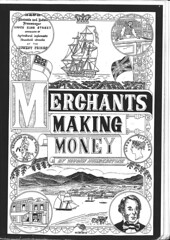 I am in the process of finalising the 2011 edition of Merchants Making Money, which will be 279 pages in length and will contain 44 full biographical articles on the issuers of New Zealand tradesmen's tokens, as well as information on the remaining NZ token issuers and on all six of the firms known to have struck NZ tokens.
I am in the process of finalising the 2011 edition of Merchants Making Money, which will be 279 pages in length and will contain 44 full biographical articles on the issuers of New Zealand tradesmen's tokens, as well as information on the remaining NZ token issuers and on all six of the firms known to have struck NZ tokens.
In the mean time, I am having a series of articles published by Token Publishing Ltd in the Coin News magazine in England (Auckland issuers, December 2008, Vol. 45, No. 12, Dunedin issuers, March 2010, Vol. 47, No. 3, Wellington issuers, forthcoming ).

The undated one-penny tokens were struck using two distinct reverse dies; one engraved with the name of the token maker, STOKES & MARTIN MELBOURNE, and one without this inscription. The reverse depicts the central shield of the 1864 Christchurch coat of arms.
THE BOOK BAZARRE
WHITMAN PROMOTION HIGHLIGHTS RED BOOK CONTRIBUTORS
At the Boston ANA show next week, we'll be offering a free Whitman folder for everyone who collects the signatures of 10 or more Red Book contributors. (See attached poster.)
Our pricing and research experts will be proudly wearing their OFFICIAL RED BOOK CONTRIBUTOR lapel pins --- and I've warned them to be on the lookout for autograph hounds!
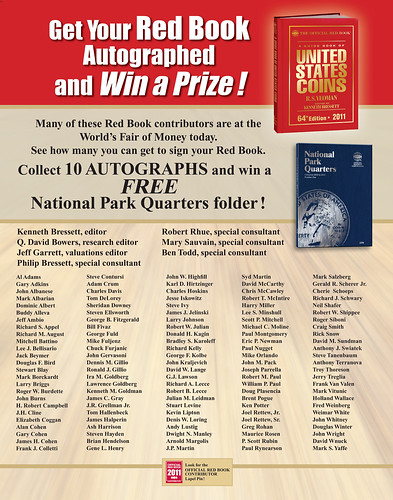
MORE ON AUDUBON'S FIRST ENGRAVED ILLUSTRATION
And now a mystery solved. Back in 1824, naturalist John James Audubon wrote in his diary that he had drawn a small grouse for a Philadelphia engraver. The drawing was meant to appear on a banknote being issued in New Jersey. It would've been Audubon's first published illustration. Scholars searched for it for decades, unsuccessfully, until currency expert Eric Newman and Audubon scholar Robert Bob Peck joined the hunt. He joins us from Philadelphia.
To listen to the interview, see: Audubon's First Print Is Found, Ending Long Search (www.npr.org/templates/story/story.php?storyId=128934691)
Katie Jaeger writes:
I enjoyed reading your excerpts from the Inquirer article about Eric Newman's Audubon discovery, but I felt a niggling déjà vu. There was something I'd read in the past having to do Audubon and claims about grouse. This morning I found it, in a book given to me by Q. David Bowers called The Rarest of the Rare: Stories Behind the Treasures of the Harvard Museum of Natural History.
This Harper Collins coffee-table book published in 2004 has color illustrations of neat items in the collections, with explanatory text on the facing pages. According to an article on p144, “Audubon's Untruth.”, apparently the issue of grouse and illustrations was a sore point with the man. Perhaps the Inquirer writer was alluding to this incident when she used the phrase “typical Audubon exaggeration.” None of this diminishes the importance of Newman's find: Bravo!
By the way, the Inquirer article you posted last week stated Audubon was 29 in 1824 (at the time of his grousy diary entry) but according to my Britannica he would have been 39 at the time.
Eric Newman writes:
Thank you for publishing your extensive write up in The E-Sylum for August 1, 2010 about the discovery of the earliest engraving of an Audubon bird. The detailed article will be published in a few weeks by the University of Pennsylvania Press in The Journal of the Early Republic. Robert Peck (Senior Fellow of the Academy of Natural Science of Philadelphia) invited me to join him in trying to solve this age old problem. All it took was persistence and luck.
A comic comment about it by my numismatic friend Chemistry Professor Peter Gaspar of Washington University in St. Louis is a pun worth repeating -- that the article was a "RARA AVIS".
Alan Stahl of Princeton University writes:
Eric Newman and his co-author Robert Peck, as well as the editors of The Journal of the Society of Early American Republic, have generously given the Princeton University Numismatic Collection permission to publish an edited version of their newsmaking paper on Audubon's grouse in the forthcoming catalogue of our exhibit Money on Paper, Bank Notes and Related Graphics from the Collections of Vsevolod Onyshkevych and Princeton University.
 A major portion of the exhibit, which opens on August 30 and runs through January 2 in the Milberg Gallery of Firestone Library, Princeton University, will be devoted to this discovery. Included will be an 1830 Fairman sample sheet with two copies of the grouse vignette, loaned to the exhibit by collector Mark D. Tomasko, photographs of two preliminary notes with the vignette from Newman's collection, and the breathtaking original Audubon print of the Pinnated Grouse in Princeton's original edition of The Birds of America.
A major portion of the exhibit, which opens on August 30 and runs through January 2 in the Milberg Gallery of Firestone Library, Princeton University, will be devoted to this discovery. Included will be an 1830 Fairman sample sheet with two copies of the grouse vignette, loaned to the exhibit by collector Mark D. Tomasko, photographs of two preliminary notes with the vignette from Newman's collection, and the breathtaking original Audubon print of the Pinnated Grouse in Princeton's original edition of The Birds of America.
Further information on the catalogue and exhibition can be obtained from Alan Stahl, Princeton's Curator of Numismatics, astahl@princeton.edu.

Bernhard Wilde writes:
I have been following the Peck/Newman story. This topic is presently being discussed on a currency forum at forums.collectors.com/messageview.cfm?catid=23&threadid=783255
Given the incomplete information in the press releases, the upcoming article seems to indicate that there are three known surviving impressions of Audubon's "running grouse" on currency. My conclusion is that there are probably at least six surviving impressions:
1. The Ohio proof
2. The Connecticut proof
3. The sample sheet
4. and 5. Two progressive proofs of the Connecticut note
6. Probably an issued version of the Connecticut note
Maybe the complete article will discuss the last three impressions.
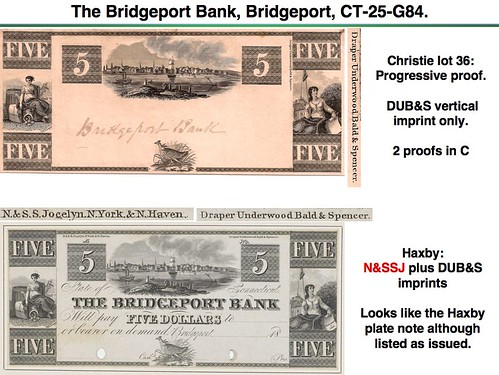
To read the earlier E-Sylum article, see: ERIC NEWMAN DISCOVERS AUDUBON'S FIRST ENGRAVED ILLUSTRATION (www.coinbooks.org/esylum_v13n31a07.html)
AUTHOR LEONARD TO DISCUSS CURIOUS CURRENCY ON RADIO SHOW
 Author Bob Leonard writes:
Author Bob Leonard writes:
I will be a guest (with another numismatist) on the Milt Rosenberg show, Extension 720, on Thursday, August 19, from 10:00 p.m. to midnight. The website is www.wgnradio.com/shows/ext720/ (http://www.wgnradio.com/shows/ext720/)
WGN is an AM station in Chicago at 720. They do podcasts of their shows. I will be discussing my new book, Curious Currency: The Story of Money From the Stone Age to the Internet Age. The format of Extension 720 is a guest interview for the first hour, followed by an hour of listener call-in questions.
To read an earlier E-Sylum article, see: BOOK REVIEW: CURIOUS CURRENCY BY ROBERT D. LEONARD (www.coinbooks.org/esylum_v13n09a05.html)
THE BOOK BAZARRE
ON PICTURES OF THE FIRST UNITED STATES MINT
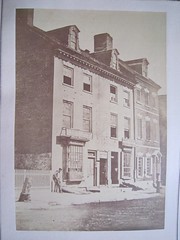 Regarding the upcoming ANA presentation "Pictures of the First United States Mint" by Joel Orosz and Len Augsburger,
Steve Shupe writes:
Regarding the upcoming ANA presentation "Pictures of the First United States Mint" by Joel Orosz and Len Augsburger,
Steve Shupe writes:
I recently acquired Volume 3, No. 7 (whole No. 31) of the “American Journal of Numismatics” dated November, 1868, in David Sklow's Auction sale #10. In it, is a great picture of the mint taken in 1854 with a short story by the photographer.
What is interesting is that I also previously purchased a book titled “Old Philadelphia, In Early Photographs 1839-1914”, 215 prints from the collection of the free library of Philadelphia, by Robert F. Looney, from David Sklow's Mail Bid Sale #5. In it is exactly the same photograph listed as #77 as in the Journal.
The description in this book states that the photograph was from 1861, seven years after the picture in the American Journal of Numismatics! Obviously one if not both have the incorrect date. I would tend to believe the date in the AJN since the article was written by the photographer.
Well, the picture is not exactly the same. The photograph in the AJN is trimmed on the sides to fit the page, but it is a real photograph, pasted onto the page.
Len Augsburger writes:
Congratulations on acquiring the AJN issue - it is a classic item of American numismatic ephemera.
As you point out, the AJN version of this photograph was cropped. The original (as shown in Looney) is from the Charles Poulson scrapbooks. The catalog of the Library Company of Philadelphia gives additional commentary on this photograph:
"One of images originally part of a series of eleven scrapbooks compiled by Philadelphia antiquarian Charles A. Poulson in the late 1850s entitled "Illustrations of Philadelphia"…The scrapbooks contained approximately 120 photographs by Philadelphia painter and pioneer photographer [Frederick De Bourg] Richards of 18th-century public, commercial, and residential buildings in the city of Philadelphia commissioned by Poulson to document the vanishing architectural landscape."
Richards photographed other buildings about the same time, including the nearby Declaration House, which has an interesting connection to the first Mint - more in the book on that.
The author of the 1868 AJN article has not been conclusively identified - Benjamin Betts seems the best guess, but no one knows for sure. Also unexplained is why the letter is signed "B. B." when the photographer was more likely Richards. We consider the Poulson scrapbooks more definitive on this point than the AJN article, they are earlier, and contain more context. Barring additional research finds (always a possibility), that's our best guess at this point.
To read the earlier E-Sylum article, see: SOME EDUCATIONAL HIGHLIGHTS OF THE ANA CONVENTION (www.coinbooks.org/esylum_v13n31a10.html)
MORE ON HOBBIES MAGAZINE
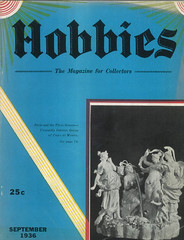
Saul Teichman writes:
With regard to Hobbies Magazine, the New York Public Library in Manhattan at 42nd street has a set.
Dave Bowers writes:
Some years ago I read through all the issues of Hobbies for numismatic content. The ANA Library has a bunch you can borrow by mail.
I found about six inches (shelf space) of these and am mailing them off to Dave Lange at the end of this week, as he will be at the ANA in Boston until then.
I used to subscribe to Hobbies in the 1950s and 1960s, by which time each of the multiple hobbies featured had a person who wrote an article each month in exchange for a free ad. Charles French (born Lehrenkrauss), of Troy, NY, was the writer for a while. I then let my subscription lapse as there wasn't much useful in comparison to Coin World and Numismatic News. By that time they had a new columnist, G.R. One day a customer wrote to me, “Did you know that G.R. in Hobbies Magazine is using the text from your Coins and Collectors book?”
I didn't know, but found it was true. Hobbies Magazine was as embarrassed as all get out and asked what they could do, etc., etc. Would I take legal action? What would I do? I told them that these things happen, it was okay, and so on. They dumped G.R. immediately and, if I recall, ran a free ad for me.
Bob Leonard writes:
In response to Dave's query, I have nothing like a set of Hobbies Magazine, but can assist a little. The earliest issue I have is "Number 3, Volume 36" (May, 1931), though I have difficulty believing that Hobbies Magazine was really started in the 19th century. The October 1931 issue has a full page ad by B. Max Mehl on the back cover, offering "some real bargains" such as U.S. $3.00 gold for 6.00, bust half dollars for 75 cents each, etc.
The latest issue I have is June, 1982 (Vol. 87, No. 4); at that time Hobbies claimed to be "America's oldest publication dealing in both antiques and collectibles." The June, 1982 issue features an article, "Collecting Tokens," by Q. David Bowers!
So yes, Hobbies belongs in every numismatic library, and assembling a set may prove as difficult as finishing a complete run of Chapman catalogs.
Len Augsburger writes:
Hobbies Magazine started in 1931. Prior to this it was published as Philatelic West. Philatelic West merged with several other publications into Hobbies in 1931. There was good "coin content" into the 1950s. I believe the magazine survives under another title today.
I was able to access the Hobbies run (in hardcopy, from 1931 on) at the Chicago Public Library. They also have microfilm which is of course more difficult and slower to use.
Several years back I called for Philatelic West at the ANS. Frank Campbell brought out an old box that was literally turning into dust. There was good content, but they only had a few assorted issues. I believe there is a complete run of this at the Nebraska State Historical Society in Lincoln, NE where it was published. I've had it on my "to do" list for a long time and if there are any NBSers in that part of the country I think this would be worth calling for.
Finally - Frank Ross, who was a long time author for the Hobbies coin section, had several volumes of his collated contributions bound together; these were sold by Orville Grady about 15 years ago. I am anxiously awaiting to see these volumes reappear on the market, but so far no luck.
Bruce Smith writes:
Dave Lange asked about Hobbies magazine. This was a major publication in its day, containing many good articles on many collecting topics, including coins and paper money. The full title is: Hobbies The Magazine For Collectors (there are other magazines titled "Hobbies"). Published by Lightner Publishing in Chicago, the magazine was formed in 1931 by Otto C. Lightner (1887-1950) from the merger of several smaller hobby magazines.
It was published monthly until 1985, when the title was changed to Antiques & Collecting Magazine. The latter was still being published in the 1990's, but I don't know if it is still in publication. An index was published in 1969, covering 1931-1969. Many public libraries and some university libraries have holdings of Hobbies -- at least they once did. Many libraries are throwing out their periodicals to make room. Hobbies is available in microfilm, and maybe someday will be available online.
Single copies of the magazine can be found for sale on Ebay, on internet book sites (try ABEBooks.com or Bookfinder.com or Alibris.com), or elsewhere on the Internet. Some used bookstores and antique shops also sell old issues. Single copies seem to be selling for around $5. There is an article on Otto C. Lightner in the March 2006 issue of Antiques Magazine.
Jan Monroe writes:
If David Lange wants a partial set of Hobbies Magazine I would send them to him if he will pay for shipping.
To read the earlier E-Sylum article, see: QUERY: RESEARCHER SEEKS HOBBIES MAGAZINE SET (www.coinbooks.org/esylum_v13n31a11.html)
MORE BOOKS WITH AN ENCASED COIN OR MEDAL
On the topic of numismatic literature with a coin or medal mounted, Jan Monroe writes:
Another book with a medal is The Indiana Medal 1816*1916. The medal by Janet Scudder. Only 918 books were printed with the medal.
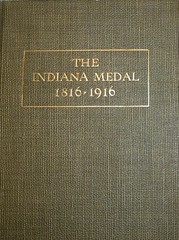
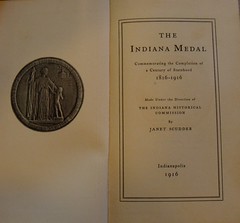
David Lange writes:
I had my own entry in this arena, though it didn't come out quite as planned. The first edition of my Buffalo Nickel book included a leatherbound version limited to six copies. Each had a pair of Buffalo Nickels mounted on the front cover to show obverse and reverse. The binder, however, didn't fully understand the instructions to set them within the cover, as he instead simply glued them to the leather! Since this left the coins vulnerable to rubbing, I solved the problem by fitting a Kointain tightly over each nickel.
I was skeptical that I could sell a deluxe edition of what was my very first book, and that's why I had only six copies prepared. I still have one in my own library, and the only one I've seen offered for sale since 1992 was in Bowers & Merena's sale of the Armand Champa Library, which included copy number one. I don't believe it realized much more than issue price. There may have been some listings since then, but they escaped my notice. While the first edition of my book pales in comparison to the more recent third edition in terms of content, I never again put together a deluxe version of this title, and it remains a modern rarity.
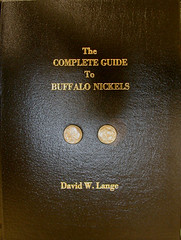
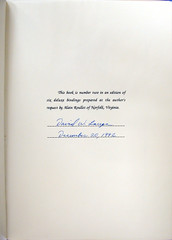
Fred Reed writes:
Regarding the carnival throw book by Jay Guren and Richard Egan - you WERE aware of it. In fact you published my description of the book and a illustration of its cover in an earlier E-Sylum (September 19, 2009). Try some ginseng. It helps the memory they say. Ha. Ha.
To read the earlier E-Sylum articles, see:
MORE ON MARDI GRAS DOUBLOON LITERATURE
(www.coinbooks.org/esylum_v12n37a10.html)
ANOTHER COIN BOOK WITH AN ENCASED COIN OR MEDAL
(www.coinbooks.org/esylum_v13n31a09.html)
READER COMMENTS ON 'THE MEDAL MAKER' VIDEO
Richard Jewell writes:
I thoroughly enjoyed viewing The Medal Maker on YouTube. What a great documentary dating back to 1929! Thanks for sharing the link. Maybe you should mention it again, just in case someone missed it!
To read the earlier E-Sylum article, see: 'THE MEDAL MAKER' VIDEO IS NOW ON THE INTERNET (www.coinbooks.org/esylum_v13n31a13.html)
AFFORDABLE LEATHER BOOKBINDING SERVICE RECOMMENDATIONS
Roger Siboni writes:
Bookbinders span the gamut from quick and dirty (Kinkos) to insanely elaborate and expensive (take a look at the binding used on the George Washington Book in the upcoming Heritage Platinum night sale). I think you need to start with what you want and go from there.
I used Alan Grace in Jacksonville (now in Atlanta) for years, but after a while your library tends to take on a certain Alan Grace look. So I am experimenting with a new bookbinder in Rhode Island for both Book Plates (his wife is a graphic designer) and bindings. So far so good on both fronts, but it is still early days. I will report in again when I get the Plates and the first shipment back.
Charlie Davis uses Harcourt Bindery in Boston. I have used them as well and found their work to be very good, but on the slightly pricey side. One final thought, people have mixed feelings about using bookbinders outside of driving distance. If you can drive there, you can save shipping and time and also explain exactly what you want. But I find geography limiting in terms of skills and diversity of binding look.
Dave Perkins writes:
I've used a third generation Denver bookbinder over the years with very good luck. Their work has been great and the prices seem reasonable. The name is Denver Bookbinding Company. They are very knowledgeable and still have some of the old machines and craftsman.
I've used them for restoration, new leather bindings and also to bind a set of Detroit City Directories from the 1860s. I've never been disappointed with their work. Here is the link: www.denverbook.com .
To read the earlier E-Sylum article, see: QUERY: AFFORDABLE LEATHER BOOKBINDING SERVICE SOUGHT (www.coinbooks.org/esylum_v13n31a12.html)
QUERY: COIN CHEMISTRY REFERENCE SOUGHT
Warner Talso writes:
A question was posed to me on which your readers might be able assist. What single reference book would you recommend for a discussion of coin chemistry? There is a lot of information out there and a lot to discuss. What reference gathers it up best in one spot?
 Well, only one author comes immediately to mind, but I'll be showing my age.
Weimar W. White published a number of articles on the topic over the years, and in 2004 he published a compilation of articles in book format (2nd edition). Some deal with the cleaning of coins while others address coin preservation.
Well, only one author comes immediately to mind, but I'll be showing my age.
Weimar W. White published a number of articles on the topic over the years, and in 2004 he published a compilation of articles in book format (2nd edition). Some deal with the cleaning of coins while others address coin preservation.
As Warner notes, a number of more recent articles have come out, but I'm not sure where to find all of the most up-to-date information. More details will be coming out based on the recent "Coin Doctor" lawsuit, so perhaps no recent book could be the "final" authority. What sources can our readers recommend?
I found the above image on the Wizard Coin Supply site. For more information, or to order, see: www.wizardcoinsupply.com/product/coin-chemistry.html . -Editor
THE BOOK BAZARRE
DAVID ALEXANDER RECEIVES THE BURNETT ANDERSON MEMORIAL AWARD
Past winners include Q. David Bowers, Beth Deisher, David Harper, R.W. Julian, Clifford Mishler, Eric P. Newman, Edward C. Rochette and Margo Russell. The 2010 winner has been announced - congratulations to David Alexander. See the complete article on the Stack's web site. -Editor
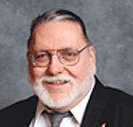 The Burnett Anderson Memorial Award for Excellence in Numismatic Writing is presented annually to a researcher, author or journalist in recognition of his or her career contributions to numismatics. First conferred posthumously in 1999 to its namesake—a newsman's journalist—the award is sponsored by F & W Publications, and the winner is selected in a cooperative process by the American Numismatic Association, American Numismatic Society (ANS) and Numismatic Literary Guild (NLG).
The Burnett Anderson Memorial Award for Excellence in Numismatic Writing is presented annually to a researcher, author or journalist in recognition of his or her career contributions to numismatics. First conferred posthumously in 1999 to its namesake—a newsman's journalist—the award is sponsored by F & W Publications, and the winner is selected in a cooperative process by the American Numismatic Association, American Numismatic Society (ANS) and Numismatic Literary Guild (NLG).
The recipient of this year's award is David Thomason Alexander, an accomplished writer, cataloger and numismatist currently employed by Stack's in New York City. Born in Brooklyn, Alexander and his brother, John, began collecting coins in 1949 after the family moved to Florida. The boys joined the Miami Coin Club in 1953 and for many years were the only young numismatists in attendance at meetings. They became members of Florida United Numismatists in 1955, the year of the organization's founding.
Alexander began his literary career in 1963, writing for publications of the Society for International Numismatics. He was a staff writer and editor for Coin World from 1974 to 1981, and as an outside contributor has penned the hobby weekly's column “The Research Desk” since 1991. Alexander also is a contributing editor for the monthly COINage magazine.
A member of the Numismatic Literary Guild since 1975, Alexander served as its executive editor from 1982 to 1990. He received its highest honor, the Clemy award, in 1987 and has earned 20 NLG honors for his writing over the last 35 years.
Regarding his receipt of the 2010 Burnett Anderson Memorial Award, Alexander says, “I am both gratified and amazed. I knew Burnett reasonably well as a fellow reporter, although since he was employed by Krause Publications, we were in opposite trenches.”
Alexander notes that Anderson “brought to the craft a marvelous depth of knowledge of both the greater world and the world of numismatics—a rare combination in today's hobby. I have received an award or two during my own writing career, but this honor will be especially treasured.”
To read the complete article, see:
David Alexander Receives the Burnett Anderson Memorial Award
(news.stacks.com/content/david-alexander-receives
-the-burnett-anderson-memorial-award/)
UPDATE ON THE HUNLEY, THE LUCKY COIN SUBMARINE
A decade after the raising of the Confederate submarine Hunley off the South Carolina coast, the cause of the sinking of the first sub in history to sink an enemy warship remains a mystery. But scientists are edging closer.
On Friday, scientists announced one of the final steps that should help explain what happened after the hand-cranked sub and its eight-man crew rammed a spar with a powder charge into the Union blockade ship Housatonic off Charleston in February, 1864.
Early next year the 23-ton sub will be delicately rotated to an upright position, exposing sections of hull not examined in almost 150 years.
When the Hunley sank, it was buried in sand listing 45 degrees to starboard. It was kept that way as slings were put beneath it and it was raised and brought to a conservation lab in North Charleston a decade ago.
Sunday marks the 10th anniversary of the raising of the Hunley, discovered five years earlier by shipwreck hunter Clive Cussler.
As thousands watched from boats and the shoreline, the Hunley was brought from the depths and back to the lab by barge. Thousands turned out again in April 2004 when the crew was buried in what has been called the last Confederate funeral.
During the past 15 years, about $22 million has been spent excavating and conserving the Hunley, according to Friends of Hunley, the nonprofit group that raises money for the project.
To read the complete article, see: 10 Years On, Mystery of Confederate Submarine Remains (www.artdaily.org/index.asp?int_sec=2&int_new=39813)
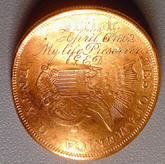 There is a numismatic connection: Lt. George Dixon, the
sub's commander, carried with him a special $20 gold piece.
"Early in the war, in Mobile, Ala., Queenie Bennett (Dixon's
fiancée) gave him a $20 gold piece. While at Shiloh, a Union
bullet penetrated his trouser pocket and struck the coin. The
impact left the gold piece shaped like a bell, with the bullet
embedded in it. If it wasn't for that coin, he probably would
have died on the battlefield–and the Hunley might never have
made history. He would carry that coin the rest of his life..."
There is a numismatic connection: Lt. George Dixon, the
sub's commander, carried with him a special $20 gold piece.
"Early in the war, in Mobile, Ala., Queenie Bennett (Dixon's
fiancée) gave him a $20 gold piece. While at Shiloh, a Union
bullet penetrated his trouser pocket and struck the coin. The
impact left the gold piece shaped like a bell, with the bullet
embedded in it. If it wasn't for that coin, he probably would
have died on the battlefield–and the Hunley might never have
made history. He would carry that coin the rest of his life..."
To read the earlier E-Sylum article, see: HUNLEY SUB LUCKY GOLD COIN FOUND (www.coinbooks.org/esylum_v04n22a05.html)
MORE ON WHY CASH COINS HAVE SQUARE HOLES
Bruce Smith writes:
Regarding why Chinese cash coins have square holes, the two responses you published are correct. The earliest cash coins, cast in the 300's and 200's BC, were made with round holes in some places and square holes in others. The square hole won out in order to file off the casting sprue.
Some numismatic works answer this question in cosmological terms -- the square hole represents the squareness of earth, with its four directions, while the round shape represents heaven, which is round (or more accurately hemi-spherical).
Howard A. Daniel III concurs. He writes:
Why do Chinese cash coins have holes? This question is not correct because it was not only the Chinese who issued cash coins! The Chinese issued the first one, but the Koreans, Japanese and Vietnamese also issued them, and the Vietnamese minted the last official cash coins. And there were many unofficial cash coins issued by merchants and mines and plantations in Southeast Asia too, and many unofficial coins had round center holes. So the question should be, "Why do official cash-style coins have square center holes?"
The square center hole in the coin represents the earth and the round outer shape represents the universe. With the king or emperor's reign title in two of the four characters on the obverse side, this showed the king or emperor was a supreme being.
The square center hole was also practical because a square rod was needed to hold the coin in place while excess metal was being filed off on those that needed it. And the holes in cash coins were also used to string them in groups of 500, 600 and/or 1000 when they were sent from the mint. And they often stayed strung to use to complete a transaction.
But a VERY important reason for the hole was that the great majority of East Asians did not have pockets in their clothes! For the upper classes, they had small coin bags, sacks or purses which were tied or looped on their belts to hold their coins, but the poorer people did have coin bags, sacks or purses and strung their coins on a string or wire and then put them on their wrist, belt or their carrying pole.
To read the earlier E-Sylum article, see: QUIZ ANSWER: WHY DO CHINESE CASH COINS HAVE HOLES? (www.coinbooks.org/esylum_v13n31a14.html)
NOTES FROM E-SYLUM READERS, AUGUST 8, 2010
Regarding Alain Debelder's "Belgisch Noodgeld" book, Rich Hartzog writes:
I now have a supply of this book on hand. Printed in Full Color, it runs 324 pages, with most items illustrated, with a price guide. While in French, it is straight forward, and easily usable by everyone. A four language translation section covers common words. Only $54 postage paid to the USA. I do have most exonumia books, at www.exonumia.com/books.htm.
Rich also forwarded the following press release relating to this week's ANA convention:
Rich Hartzog announced the immediate availability of the 28th annual Pass out Sheet listing all quality Token and Medal Dealers at the Boston ANA Convention.
All exonumia dealers will have a supply of the map and listing at their tables, as well as a supply at the front literature tables in the lobby. Pick up a copy and quickly find all exonumia dealers. The on-line version at www.exonumia.com/ana2010.htm also has links to dealer sites, email and physical addresses, as well as specialties at the show. Twenty dealers are on this year's sheet.
Jeffrey Zarit writes:
Earlier in The E-Sylum I mentioned the passing of Bill Christensen and others added their comments as well. As numismatists we handle old things but we don't talk about our old colleagues much, most of them became our friends as well. At my age of 61 several are gone and I miss them, their friendship, their companionship as well as their business. Your forum is as good a place as any to remember them.
Last week we published parts of an article on the 500-Euro note.
The high-value bills are increasingly "making the euro the currency of choice for underground and black economies, and for all those who value anonymity in their financial transactions and investments," wrote Willem Buiter, chief economist at Citigroup, in a recent research report.
Joe Boling writes:
Which is exactly why Britain has banned the use of the 500-euro note in the country. Starting a few weeks ago, banks and money-changers are forbidden to sell the note (I don't know what the policy is on banks taking them in).
THE NUMISMATIC BIBLIOMANIA SOCIETY FACEBOOK FAN PAGE
Roger Siboni writes:
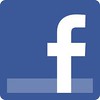 With respect to Facebook, I will also admit to not being a big Facebook user, but I am religious about checking in to the Yahoo Colonial Coins Chat Board which probably has 100 plus members. There is not a Colonial question that can't be answered there. I can't remember how many years this has been around but I would say more than 10.
With respect to Facebook, I will also admit to not being a big Facebook user, but I am religious about checking in to the Yahoo Colonial Coins Chat Board which probably has 100 plus members. There is not a Colonial question that can't be answered there. I can't remember how many years this has been around but I would say more than 10.
I forgot the the name of the company that Yahoo acquired to buy the ChatBoard/ChatRoom function (and our ChatGroup), but we were all on that before the acquisition. Before that, a very few of us were on the CompuServe Chat Board. I think the Colonial Chat room, which could not have been more than 10 people.....Don Mituzas, Neil Rothschild, Dennis Wierzba, Ray Williams, Dave Palmer....I can't remember the rest, met every Monday night 9PM EST for an hour. Being a Californian, I met several collectors there first.
After just one week we already have 61 followers. Most are existing subscribers, but over time I think we can attract others who may not have otherwise been aware of The E-Sylum or the Numismatic Bibliomania Society. -Editor
To read the earlier E-Sylum article, see: FACEBOOK AND THE NUMISMATIC BIBLIOMANIA SOCIETY (www.coinbooks.org/esylum_v13n31a21.html)
To reach the NBS Facebook page, see:
www.facebook.com/pages/Numismatic
-Bibliomania-Society/144733835552745
.
IS IT REAL? A 1913 DENVER MINT SHIPPING CRATE
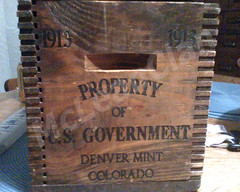
To read the complete eBay listing, see: 1913 Buffalo Nickel Wooden Crate (Box) - Denver US Mint (cgi.ebay.com/ws/eBayISAPI.dll?ViewItem&item=180540342750)
THE BOOK BAZARRE
A FEW UPCOMING SEPTEMBER 16, 2010 AUCTION HIGHLIGHTSClassic and Standard Works on Ancient Art, Archaeology and Antiquities Including:
- Furtwängler's 1895 Masterpieces of Greek Sculpture;
- Beazley's 1954-63 Attic Vases;
- Trendall on the Vases of Lucania, Campania and Sicily with supplements;
- Many Princeton Volumes on the Athenian Agora; Robinson's Olynthus Series;
- Classic works on cylinder seals by Brandt, Eisen, Osten, Richter, Vollenreider and others.
(614) 414-0855 • df@numislit.com • GFK@numislit.com
THE PRESIDENTIAL CITIZEN'S MEDAL
 The Citizens Medal is the second highest civilian honor in our nation. For over 40 years, some of America's most respected heroes and public figures like Muhammad Ali, Colin Powell and Bob Dole, and everyday heroes like Oseola McCarty, a washerwoman who left her entire life savings to establish a scholarship for students in need, have received this award.
The Citizens Medal is the second highest civilian honor in our nation. For over 40 years, some of America's most respected heroes and public figures like Muhammad Ali, Colin Powell and Bob Dole, and everyday heroes like Oseola McCarty, a washerwoman who left her entire life savings to establish a scholarship for students in need, have received this award.
This year, we decided to try something a little bit different. We asked you, the American public, to tell us about the heroes in your community -- the folks who may not always get the recognition they deserve, but whose selfless work is making a real difference.
We received over 6,000 outstanding nominations from around the country. It was a tough choice, but we were able to narrow it down to 13 recipients of the 2010 Citizens Medal:
www.whitehouse.gov/citizensmedal
This year's Citizens Medal recipients should serve as an inspiration to all Americans: A widow who lost her husband on 9/11 and turned her grief into a message of hope for Afghani women whose husbands were lost to the Taliban; a school bus driver who delivers hot meals and coffee to New York City's homeless and forgotten 365 nights a year; a North Chicago nurse and childcare professional who opened a live-in resource center that has given help and hope to hundreds of pregnant teenagers. They are all powerful reminders of the impact individuals can have on their community and on the world.
Congratulations to this year's Citizens Medal recipients, and thank you to the millions of Americans who strive to make their communities better every day.
Sincerely,
President Barack Obama
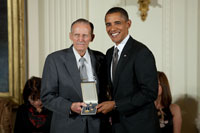 George Weiss, Jr., a veteran of World War II and the United States Marine Corps, reflects our nation's generous and selfless heart. In 1979, he founded the Fort Snelling Memorial Rifle Squad, which today consists of more than 125 volunteers who have performed final military honors for more than 55,000 deceased veterans. Weiss receives the Citizens Medal for his extraordinary service to our nation's veterans and their families.
George Weiss, Jr., a veteran of World War II and the United States Marine Corps, reflects our nation's generous and selfless heart. In 1979, he founded the Fort Snelling Memorial Rifle Squad, which today consists of more than 125 volunteers who have performed final military honors for more than 55,000 deceased veterans. Weiss receives the Citizens Medal for his extraordinary service to our nation's veterans and their families.
To read the earlier E-Sylum article, see: PRESIDENT BUSH SURPRISES FOUR WITH PRESIDENTIAL CITIZENS MEDALS (www.coinbooks.org/esylum_v11n47a24.html)
MECHANICAL BANKS BREAK RECORDS AT MARYLAND AUCTION

Interest was keener than ever, and the bidding action was relentless in RSL Auction's sale of antique toys and banks held May 22nd at Richard Opfer's suburban Baltimore gallery. “We started at noon and finished at 20 till three – it was about two hours and 40 minutes of very serious bidding,” said RSL co-owner Ray Haradin.
In all, the auction took in $1.8 million (all prices quoted include 21.5% buyer's premium). “They came to buy; they didn't want to sit there with an auctioneer trying to milk a few extra dollars out of them,” said Haradin. “When Rick [Opfer] is at the podium, you put your hand up or you don't get the toy.”
The featured attraction of the 360-lot sale was the Richard C. Stevens collection, a 24-year assemblage of cast-iron mechanical banks boasting superb conditions and with provenance reflecting several of the most prestigious collections of the past half-century.
Many auction records were broken, said Haradin – “more than I can remember, and in the heart of a recession, as well.” The top lot of the day was a circa-1905 J. & E. Stevens Calamity bank with rare chocolate-brown base. When activated, the football-theme cast-iron bank depicts two Yale players tackling a running fullback from Harvard. Formerly in the Stephen Steckbeck collection and in near-mint-plus condition with original box, the bank scored a mighty auction price at $78,975.
One of the rarest mechanical banks offered was a circa-1930 Kilgore Mfg. Co. Turtle bank. One of only nine examples known, the near-mint cast-iron amphibian could boast a background that included tenure in the Covert and Gertrude Hegarty, Stan Sax, and Dick Stevens collections. It finished near the top of its estimate range at $72,900.
Designed by Charles Bailey for J. & E. Stevens around 1899, the wonderful Chief Big Moon bank depicts a Native American chief sitting at the entrance to his teepee and facing a large frog and swan pond. Described in the auction catalog as “extraordinary” and “as mint as it gets,” the bank with provenance dating back to the Bill Bertoia collection swept past its $20,000-$30,000 estimate to set a new auction record at $41,310.
Another big winner was the circa-1880 Initiating First Degree bank manufactured by Mechanical Novelty Works. An appealing, entertaining bank, its three characters – a goat, a frog and a black youth – appear to be participants in some sort of ritualistic initiation. When a coin is placed in the boy's tray and the lever is activated, the coin drops into the frog's mouth and the goat rams the boy's backside with its horns. Estimated at $30,000-$50,000, the near-mint money box earned $60,750.
To read the complete article, see: Mechanical Banks Draw High Rate of Interest at RSL's $1.8 Million Auction in Baltimore (www.artdaily.org/index.asp?int_sec=2&int_new=39581)
LINCOLN CENTS DECORATE BAR IN SPRINGFIELD, IL
It's doubtful that any business in Springfield displays more images of Abraham Lincoln than the Price Street Pub.
There are 10,250 on the oak bar alone.

For decades, the neighborhood pub at 2815 Price St. has been home to a bar covered end to end with Lincoln pennies.
“You say Price Street and people don't know the place. You say ‘penny bar' and they know where it is,” said Tom Sutton, who owns the bar/restaurant with his wife, Diana.
The pub has been in the same location near Summit Avenue since 1931, according to city directories. In 1977, the former owners installed the first penny bar.
“The whole bar, the railing underneath and a cash register table were filled with 1977 pennies,” said Tom. “They started out all being heads up, facing the same way, but then they gave up on that and just stuck them on.”
After 30 years, wear and tear took its toll on the bar and the surface began to crack and bend. The Abes started to amble.
“It had a lot of character, but there were a lot of burn spots. You could see the wear,” said Tom. In 2008, he and Diana decided to make a new penny bar.
First task: Getting 10,250 shiny, new 2008 pennies.
“I went to the bank to get them and they said, ‘Are you crazy?'” said Tom.
The Suttons called the U.S. Treasury and put in an order. It was a long and complicated process, but the pretty pennies finally arrived in Springfield.
Diana oversaw the job of placing the shiny new Lincolns on the bar.
“I lined up the first row, all heads up, side by side, facing north. I thought it looked sharp and wanted them all that way,” she said. Friends, employees and customers all helped lay the thousands of pennies on the bar, which is 20 feet long and 2 feet wide.
Somewhere — Diana has never spotted them — Tom snuck in three 1977 pennies, a tribute to a deceased friend.
“We mixed Elmer's glue and water and spread it to hold the pennies down. It took three days. Everyone helped,” she said.
Once the Abes were perfectly positioned, the bar top was covered with a thick coat of polyurethane. It hardened overnight, but took about a week to completely dry.
To read the complete article, see:
Thousands of Abe Lincolns buried in Springfield pub
(www.sj-r.com/features/x1137370058/Kathryn-Rem
-Thousands-of-Abe-Lincolns-are-buried-in-a-Springfield-pub)
FEATURED WEB SITE: TEYLER'S MUSEUM
This week's Featured Web Site is Teyler's museum. It is suggested by George Cuhaj, who writes:
I share this as I meet one of their employees at the FIDEM conference. The homepage has a cool image of the main gallery. Interesting concept - keep it old.

Teyler's Museum has a great collection of coins and medals, and some of these are pictured on the home page. Below is more information about the museum and its numisamtic collection, taken from the web site. -Editor
Unique to this museum is the historical presentation of its collections, largely unchanged since the late 18th and 19th centuries.
The oldest museum in the Netherlands, Teylers was founded in the eighteenth century and still exudes the atmosphere of that time. Built in 1784 to house exhibits legated by Pieter Teyler, a wealthy banker and merchant, it has hardly changed in all those years. As a visitor, you wander past the various items shown in the attractive historical display cases, which are lit only by daylight. It is as if you were leafing through an encyclopaedia, allowing each object to tell its own story – each fossil, mineral or scientific instrument; each coin, medal, book, print, painting or drawing. Some are famous, some are complex; all are fascinating.
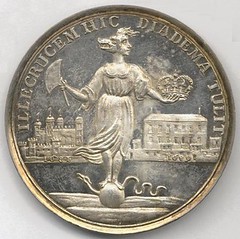 The Numismatic Cabinet contains the second most important coin and medal collection in the Netherlands. Its foundations can be traced back to the private collection of Pieter Teyler, founding father of Teylers Museum, but it was not till 1886 that a separate gallery was created to display the collection.
The Numismatic Cabinet contains the second most important coin and medal collection in the Netherlands. Its foundations can be traced back to the private collection of Pieter Teyler, founding father of Teylers Museum, but it was not till 1886 that a separate gallery was created to display the collection.
It contains a very fine series of Dutch medals, with an emphasis on historical and genealogical medals. In addition there are smaller numbers of counters, tokens and foreign medals. Two highly specialised collections are those of the West Frisian and Guelders coins. Roman and Dutch coins from other regions are also part of the collection.
http://www.teylersmuseum.eu/index.php?item=68&i_id=5416&lang=en

